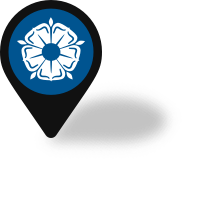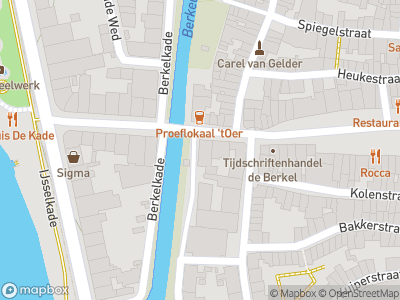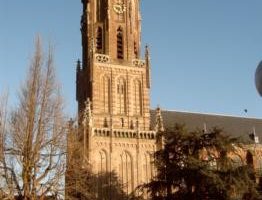Zutphen
There used to be an impressive town gate at the end of the market (Groenmarkt) called the Marschpoort. This formed the western entrance into town, leading to the quayside, the ferry crossing and from 1485 onwards, to the bridge over the river IJssel.
Gateway to the IJssel
Around the year 1400, the people of Zutphen referred to this gate as the Nieuwe Marschpoort (The new Marschpoort Gate). The gate was constructed in the late 14th century as the western entrance to the town, at the end of the Groenmarkt (the town’s fruit and vegetable market). There was still an older Marschpoort Gate further to the north, at the end of Spiegelstraat street. This had been the most important route to the west up until the 14th century. Then, in the 14th century, a series of markets was built on top of an old moat that had been filled in in around 1325. Large merchants’ houses and the town’s tavern, Het Wijnhuis (the Wine House), were soon built around the market, and it became a centre of trade and commerce.
This prompted the civic administration to commission the construction of a new gate one which led to the river bank where the ships of the Hanseatic League were loaded and unloaded, and one which also led to the ferry across the river IJssel.
Schipbrug
At the end of the 15th century, trade on the river started to decline quite significantly, whilst trade on land from Holland to Westfalen started to increase. This led to the ferry being replaced by a permanent bridge over the IJssel in 1485. As a result, Zutphen could continue to compete with neighbouring Deventer, even though Deventer was stronger economically due to its successful annual markets.
During the Guelderian Wars (1502-1543), Zutphen suffered from long-term economic isolation. This was unfortunate, but the town still needed to invest in fortifying the town. The result, was a crescent-shaped defensive wall built in 1532 immediately in front of the old gate. This wall needed to protect the western entrance against artillery fire, and provide a place to defend the town with its own artillery. This bulwark was given an additional gate called the Buiten Marschpoort (Outer Marschpoort Gate), the remains of which now lie underneath Marschpoortstraat street.
New fortifications
Between 1572 and 1591, the river IJssel formed the frontline in the war against the Spanish. Maurice of Nassau, Prince of Orange conquered Zutphen in the last year of the war and had no intention of letting the town go. He commissioned work on the construction of powerful fortifications consisting of bulwarks and wide moats, straight away, and the Marschpoort bulwark was erected in 1593. Another third gate was built into this, which became known as the Buitenste Marschpoort. The mouth of the river Berkel, situated to the north of Zutphen, also had to be protected by the new fortifications. Since 1610, the Berkel has flowed through the medieval town’s canals to the new river mouth at the Kattenhavenstuw weir, which is still the case today.
The wooden bridge in front of the medieval gate was replaced by a brick, arched bridge in 1716. During the 18th century, the fish market was held here in front of the bridge, which can be seen on a drawing by Jan de Beijer of the gate and the market dating from 1743.
Demolition
By 1820, the once-so-glorious gate had become a bit of an obstacle, and it was demolished. In 1855, the Ministry of War also gave permission for the western part of the fortifications to be demolished. The town designed a new quayside with white town houses and a wide entrance to the market at the bottom of the Groenmarkt (fruit and vegetable market), known as Marschpoortstraat street. A cast-iron bridge was built in 1861, next to the stone bridge, which is why the current bridge is so wide.
In 1998, the foundations of the Marschpoort Gate were discovered and marked in the pavement for all to see.














